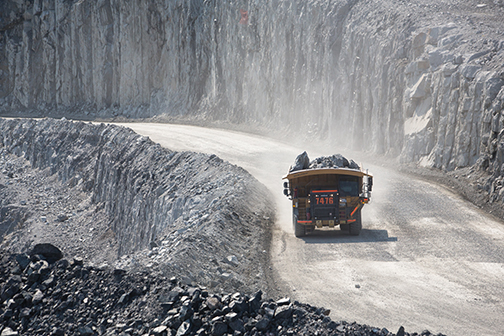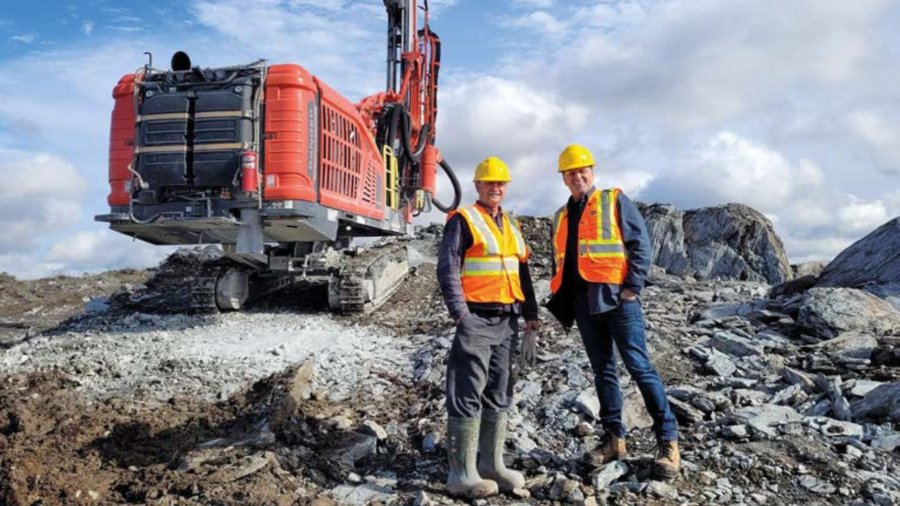Canada’s coal producers answer the world’s needs
The headline “Coal Country” on the previous article refers primarily to activities in British Columbia but those two words can also be used to describe Canada as a whole because of the vast reserves and resources of coal this country possesses.
Naturally, British Columbia is a leading producer and exporter of coal, but a recent “Economic Impact Analysis of the Coal Mining Industry in British Columbia, 2011” study conducted by PricewaterhouseCoopers LLP (PWC) for The Coal Association of Canada (CAC) clearly supports that Canada also plays a major role in the supply of coal on a world scale.
Prior to PWC’s recent study, the last official survey of Canada’s coal reserves was reported by the Geological Survey of Canada in 1989. That report listed the official estimate of Canada’s coal reserves and resources at December 1985: coal reserves were 8.8 billion tonnes, of which 6.6 billion tonnes were recoverable coal reserves.
With vast reserves often comes extensive mining and exporting and in 2011, Canada was the third largest exporter of metallurgical coal after Australia and the United States, and according to the World Coal Association’s AME Mineral Economics Report, “Eighty-nine per cent of the Canadian metallurgical coal exports come from British Columbia, the province can be considered the third largest exporter of metallurgical coal in the world and one of the top ten global producers.”
Delivering Canadian coal to offshore markets is a major undertaking and on average, coal makes up 11% of total railway traffic carried across Canada annually and in 2011, British Columbia was the destination for 92% (38.5 million tonnes) of the total coal tonnage carried by rail in Canada.
While much of the information in PWC’s study to CAC is privileged and confidential, CAC President Ann Marie Hann did highlight some of The Study’s findings for Canadian Mining Journal insofar as coal mining in British Columbia is concerned.
In support of what was mentioned in the previous “Coal Country” article, President Hann added that “Coal makes a significant contribution to the British Columbia economy through employment, tax revenue and contribution to provincial GDP.
“In 2011, the coal industry generated an estimated $3.2 billion in provincial GDP and approximately $715.2 million in tax revenue from all levels of government including $399 million in tax revenue generated by economic activity and $316.2 million in mineral tax payments to British Columbia.”
With 12 billion tonnes of potentially mineable resources, coal should obviously help ensure that B.C.’s economy remains strong for years to come, and Hann agrees by saying: “Coal is essential to British Columbia as a catalyst for economic development, international trade, investment in regional communities, and the employment of thousands of British Columbians.”
In fact, the coal industry in British Columbia employed more than 26,000 people in 2011, including many professional mine engineers, geologists, and other skilled and certified tradespeople. The estimated average annual wage of those directly employed by coal companies was $95,174, twice the average provincial wage of $43,500.
The average national wage for coal mining was, according to the PWC Study (2011), $92,768.
While the wages paid by B.C.’s coal mining sector are impressive, they key to what has put the province’s coal mining industry on the map is again, coal, and it’s interesting to see how it compares to the export of other natural resource products.
Coal represented almost 22% of total provincial exports, followed by 7% from all other mining activities, 6% from oil and gas production, and 2% from forestry and logging.
In terms of buyers of B.C. coal in 2011, Japan bought 27% and South Korea 26% of the province’s metallurgical coal export while China’s demand for 10% continues to rise. Coal is also shipped to Europe and the United States with 16% and 3% respectively.
More figures from PWC’s Study show the next largest shipments are at 9% to Brazil, Taiwan with 4%, exports to Turkey at 3%, and India at 1%, with the balance to other world destinations (Chile, Mexico, Pakistan, and Egypt).
While these figures are impressive and clearly show why British Columbia’s coal miners are among the top exporters in the world, reaching that status comes with a cost and the PWC Study says that while “The coal mining industry provides employment, pays higher than average wages, and generates overall economic value to the provincial economy, the economic contribution of the coal mining indusrty is also greater than these direct effects.
“Also included are effects from construction and operations expenditures generated from coal mining companies that includes the purchase of goods and services from suppliers. These activities are considered spill-over effects and also contribute economically to the provincial economy. Taxes are collected at the federal, provincial and local levels on mining company activities which in turn provides services to the general public.”
Like all mining sectors, coal miners pay their fare share in taxes and as already quoted from the PWC Study, the coal mining industry in British Columbia contributes handsomely in value-added GDP activity to the tune of just over $3.2 billion to the provincial economy.
Contributions to provincial GDP included $2.2 billion of direct mine-site activity and under $1 billion estimated from mining supply and other related economic activity.
As a result, the province’s coal mining industry paid to all levels of government a total of approximately $399 million in direct and indirect tax revenues, a figure that represents 57.2% of the estimated taxes paid to all levels of government by the national industry.
And furthermore, additional mineral taxes collected and reported by the provincial government in 2011, according to PWC’s Study, of $316.2 million and are in addition to the tax revenues just mentioned.
Paying taxes is a part of doing business and to be able to pay those taxes, the coal miners had to spend money to make money and PWC estimates that the total output of operating expenditures in 2011 was approximately $2.6 billion, made up of $1.8 billion and $766 million in direct and indirect impacts respectively.
Direct impacts include activities attributable to mining, such as employees and output of mining companies. These effects include the ongoing operations and maintenance of the mine site including transportation of mine output from the mine to the purchaser.
Indirect impacts are the activities of suppliers to mining companies and include contractors and other companies providing inputs to mining companies. Indirect effects also include the activity of suppliers to these companies.
Operating expenditure impacts in terms of contributions to GDP were estimated in the PWC Study at $1.6 billion and consisted of $1.2 billion in over $400 million in estimated direct and indirect impacts respectively.
The economic impacts for capital expenditures, including construction materials, the purchase of lands and mineral rights, expenditures on all buildings and other surface structures, machinery, equipment, mine shafts and other underground work, was $1.5 billion made up of $1.1 billion in direct capital spending impacts and over $400 million in indirect impacts.
Mining is a rewarding profession for British Columbia’s coal miners and while there’s little doubt concerning their s
kills and dedication to the industry (and for meeting the world’s demands for their products), the province and the country, for that matter, are indebted to the companies and individuals who have made Canadian coal such a treasured commodity.





Comments